Another recent death over the holidays brings home the fact far too many Hawaii visitors turn up dead on our beaches. The most recent case is a California Bay Area resident who disappeared while swimming off Anini Beach on Christmas Day here on Kauai. It wasn’t long ago that another California visitor turned up dead at the very same beach.
Anini has no lifeguard and is reef protected but not always calm. There can be strong currents, and if you are on the north end, there is a channel through the reef. The safest place is the south end, which is typically calm.
The 56-year-old Gilroy resident Prakash Shroff disappeared while swimming and was never located despite rescue attempts by boat and in the air. Prakash was swimming with his family, who accompanied him to Kauai. They were some distance offshore. The Kauai Fire Department release said that “they became distressed.” While the rest of his family could return to shore, Schroff was never found.
The Kauai Police Department said, “Our hearts go out to Prakash’s family and friends during this difficult time. We appreciate all agencies and everyone involved in our attempt to locate Prakash.”
Here on Kauai, this is one of a spate of 12 deaths by drowning, which is the primary cause of visitor fatalities in Hawaii. It is all too frequent that we learn of visitor deaths in the ocean here. Both that and our own experiences keep ocean safety on our minds.
We recall an 81-year-old California man who also died at Anini Beach in September while snorkeling. James Pirkle Jr. was found unresponsive snorkeling nearly 300 feet from the shore.
A study snorkel safety study funded by the State of Hawaii found there may be a relationship between travel and snorkel drownings.
The Hawaii state ocean safety website can help.
You’ll find information on which beaches are lifeguarded, current ocean conditions and warnings, where the most injuries occur, and other ocean safety data. The state Department of Health said the website’s goal is “Keeping everyone who goes to the ocean safe.”
If in doubt, don’t go out for real.
It is easy to think that you are comfortable in the ocean, but it is also more powerful than you think, and you can never assume it isn’t.
Top Ten Hawaii Beach Safety Tips.
Issues can include strong currents, wave surges, and seasonal variations in ocean conditions, among others. Be alert, do not turn your back on the ocean, and follow these suggestions for your Hawaii vacation:
1. Minimize risk by heightened awareness and respect for ocean conditions and dangers.
2. Swim at lifeguard-protected Hawaii beaches. Look for other beaches that have rescue station tubes.
3. Follow Hawaii beach warnings and closures.
4. Check with a lifeguard if in any doubt.
5. Observe the ocean conditions before going in. Look for variable conditions and larger-than-expected waves.
6. Review ocean safety brochures found in visitor accommodations.
7. Check ocean safety websites, including the new one and that of the Hawaii Lifeguard Association.
8. Learn about rip currents and how to deal with them.
9. Avoid jellyfish stings – read our updated Hawaii jellyfish update and calendar. (LINK)
10. Don’t traverse wet rocks, especially when waves can appear suddenly. Check for hidden underwater rocks found at many Hawaii beaches.
Can an accidental drowning happen to you?
Drownings can happen at any beach, regardless of your physical condition, age, or other factors. There were 84 drownings in the latest year studied.
There’s always a Hawaii beach accessible, no matter the time of year. But entering the water at the wrong beach at the wrong time of year is a recipe for trouble. Surf conditions change rapidly and both daily and seasonally. It can even change in minutes.
Hawaii’s Deadliest Beaches.
Surprisingly, the deadliest beaches may not be those that first come to mind. Many drownings occur at some of the smoothest water beaches where visitors are snorkeling or swimming.
Hanauma Bay
Waikiki Beach
Black Rock
Kahanamoku Beach and Lagoon
Molokini
Most Dangerous Hawaii Beaches.
Some of the most dangerous beaches in terms of injury but not mortality include the following. If your beach isn’t listed, it doesn’t mean you shouldn’t be concerned:
Makena Beach – Maui
Hapuna Beach – Big Island
Sandy Beach – Oahu
Brennecke Beach (Poipu) – Kauai
Laaloa Beach – Big Island
Thank you for paying attention to ocean safety and sharing that with others!
Photo Credit: Anini Beach, Kauai, taken by Beat of Hawaii.
Get Breaking Hawaii Travel News
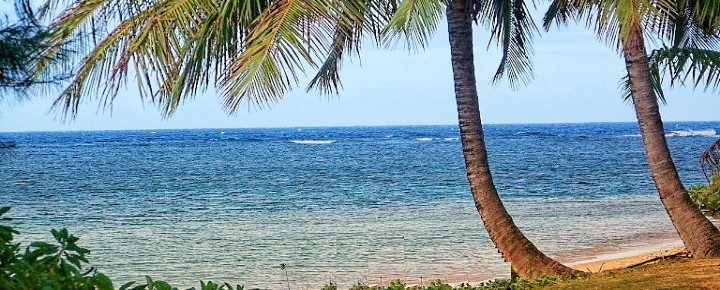
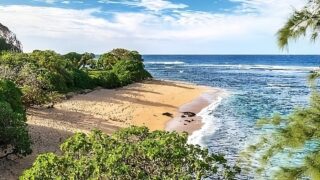
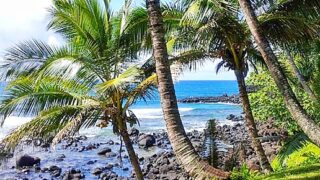

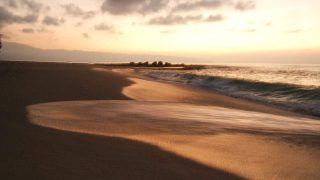
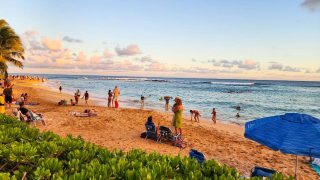
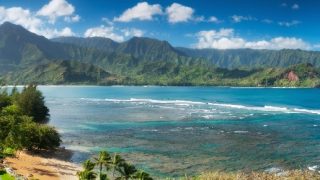
Anini beach faces north so I don’t know what you mean by the south end. Do you mean the east end or the west end?
the only reason these beaches made this list is because the mass volume off ppl,numbers….these are the safe beaches on this island go see for yourself!
Hawaii State Department of health is doing a terrible job. My brother drowned December 28, 2009 while we were on vacation, I nearly drowned as well. It was the worst day of my life, and has changed my life forever. Nothing has changed with lifeguards or information. Now we have technology that a drone can deliver a flotation device but no-one will do anything, visitors keep drowning.
There should be warning videos on every airplane to educate tourists that not all beaches are safe for every person. Just because you can swim in your own swimming pool or calm lake back home does not mean you are safe in the ocean. Tourists are so uninformed and too many die senselessly every year on vacation in Hawaii.
“Anini has no lifeguard and is reef protected but not always calm. There can be strong currents, and if you are on the north end, there is a channel through the reef. The safest place is the south end, which is typically calm.”
Anini Beach is on the north side of the island and runs east to west. It’s a bit confusing to refer to the north and south ends of the beach. For the sake of warning visitors, it would be much more helpful to include an annotated satellite image of the beach, which makes the channels much more clear.
Isn’t Anini beach north facing? Seems like better directions for safe swimming would indicate the east end or west end versus north or south. Not sure what you mean by your directions.
Mahalo…..
I would also say, If you’re not a good strong swimmer stay out of the ocean. The ocean is not a swimming pool.
We snorkeled at Anini beach once and while we did not have any issues with snorkeling, we did come back in to shore and find some of our belongings gone. Not a place I would recommend hanging out.
This is a good time to give a Huge hand to the lifeguards all over the island! As a seal volunteer, I have spent many hours at Poipu on watch with my favorite marine mammals and have witnessed, up close, the LG’s there pull 3 people from the water who were unresponsive, one lady was so blue from lack of oxygen that I was sure she was a goner, but those LG’s were able to resuscitate each one of those 3 swimmers/snorkelers and pull them back from the brink! I salute them and feel Kauai needs So many more of them!!
With snorkeling incidents, pay attention to those full-face masks. There seems to be a carbon dioxide build-up inside the mask. Stick to the old kind!
It is easy to see the channel on Google maps. When the tide goes out, the flow/current through that channel is strong and takes you into deep water. I had that happen on Lawa’i Beach with my wife, and it was very scary. So, check with the snorkel stores, know the tides, and observe others in the water. There is almost always one or more places to safely snorkel on the islands. Be safe and smart!
I am always so sad to see another Anini snorkel death. As a north shore property owner, I know Anini well, including the strong current in the main channel. You risk getting swept away if you snorkel near the channel. The risk is much greater if you go on a high-surf day. People should know that!
Why no class action lawyers suing the state for negligence?
Imagine the State claiming they can’t afford $100 a day for a lifeguard at Anini beach? Highest hotel taxes in the US and no regard for the life of tourists.
Shameful.
There obviously could never be such a lawsuit, because it wouldn’t stand up in court. State of Hawaii didn’t designed the beaches and is unable to control occurrence, the tides on the weather. The state of Hawaii, or any other state cannot possibly be responsible for ensuring the safety of everyone who decides to go into to the ocean. Common sense is an expectation for all of us. Mahalo for your kokua.
Mahalo. Excellent advice. A local also gave me this good advice. When you go to the beach – any beach – resist the urge to “jump right in”. Instead watch the people in the water especially the locals. Where are they? How far out? What are they doing – swimming, snorkeling, boarding? Also watch the waves. Waves have patterns – so many waves to a set, then a lull, then waves again. And finally – most importantly – don’t keep you back turned to the waves. This does many people In especially people who ignore the signs & lifeguards, climb the rocks and then turn their back to the waves to get that “perfect selfie”. Instead they get hammered by a wave they didn’t see coming and end up severely injured or worse.
Hi Tom.
Thanks. We appreciate your suggeststions and your 100 comments to date!
Aloha.
Snorkeling at Anini felt calm and wonderful until I stuck my head up and realized I was far – FAR – from where I thought would be, where I wanted to be. For some reason, I didn’t panic but I was darn close!